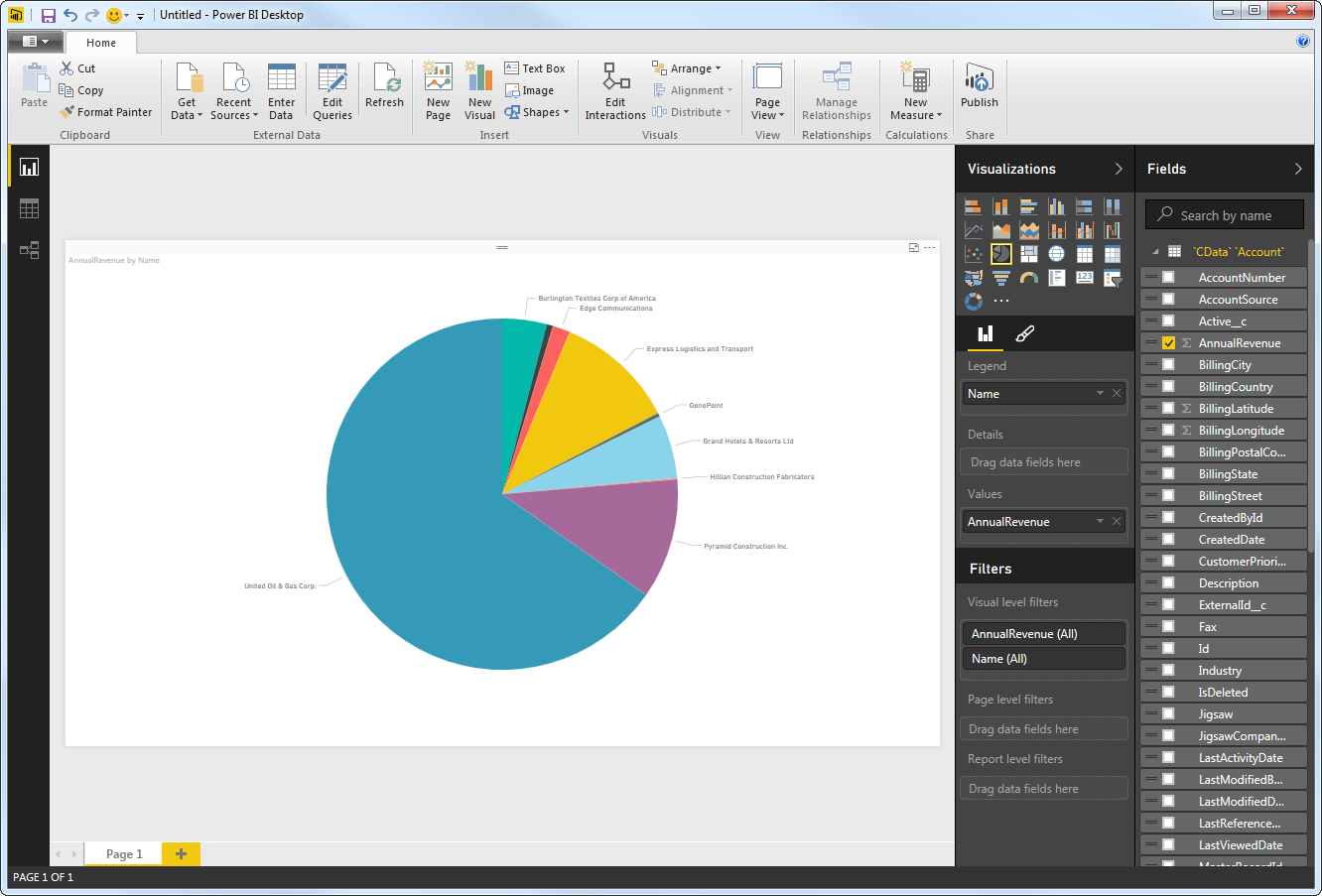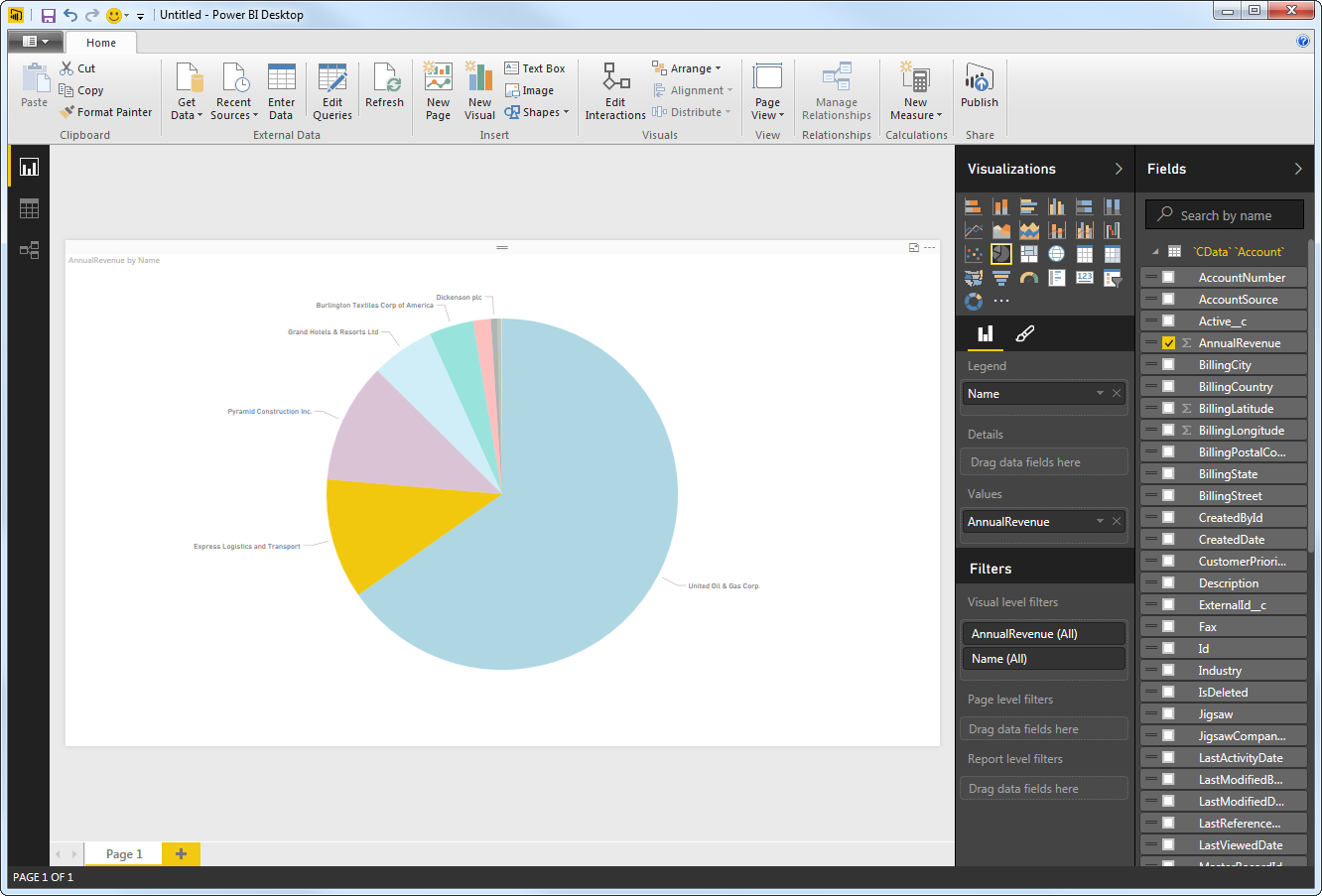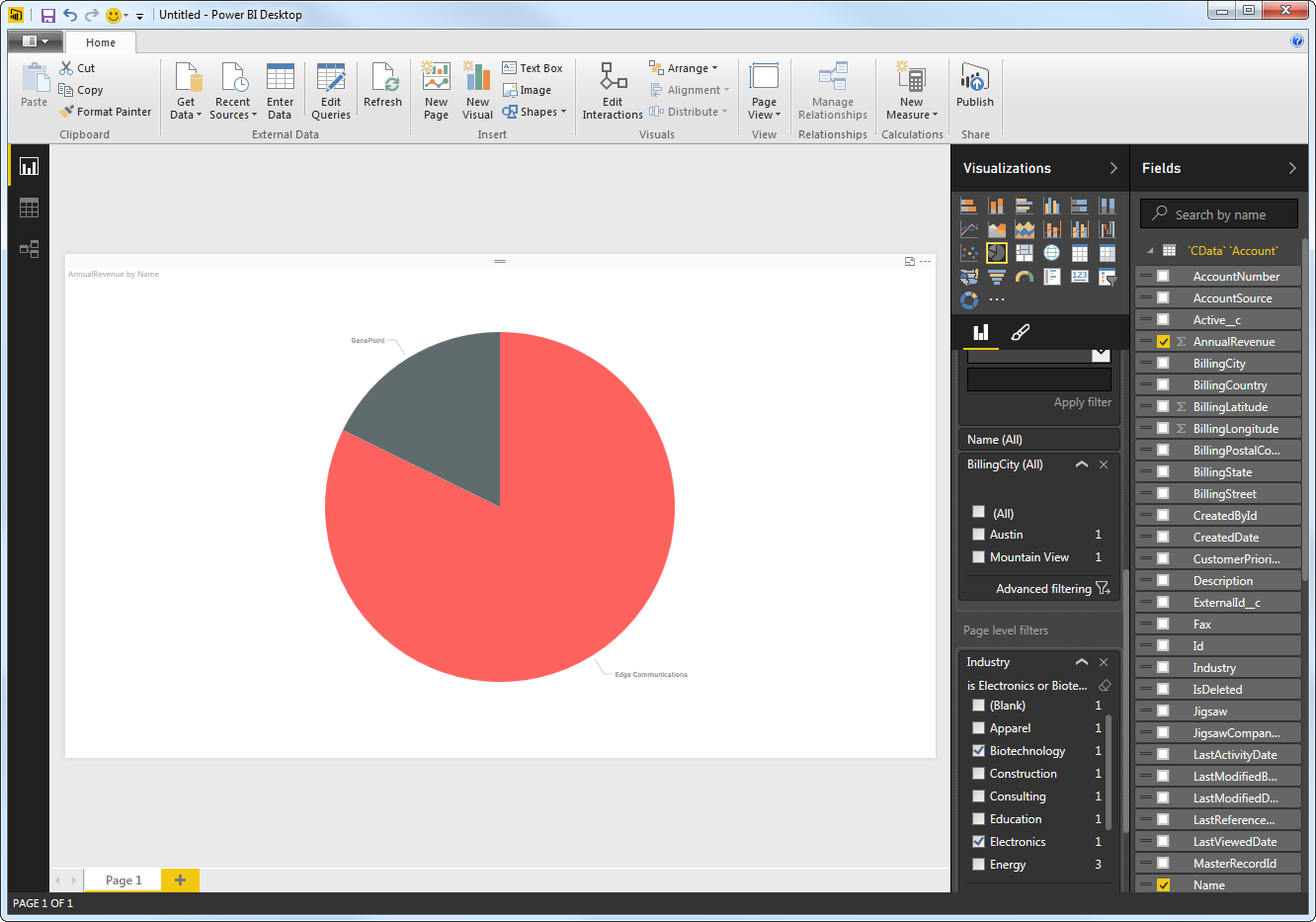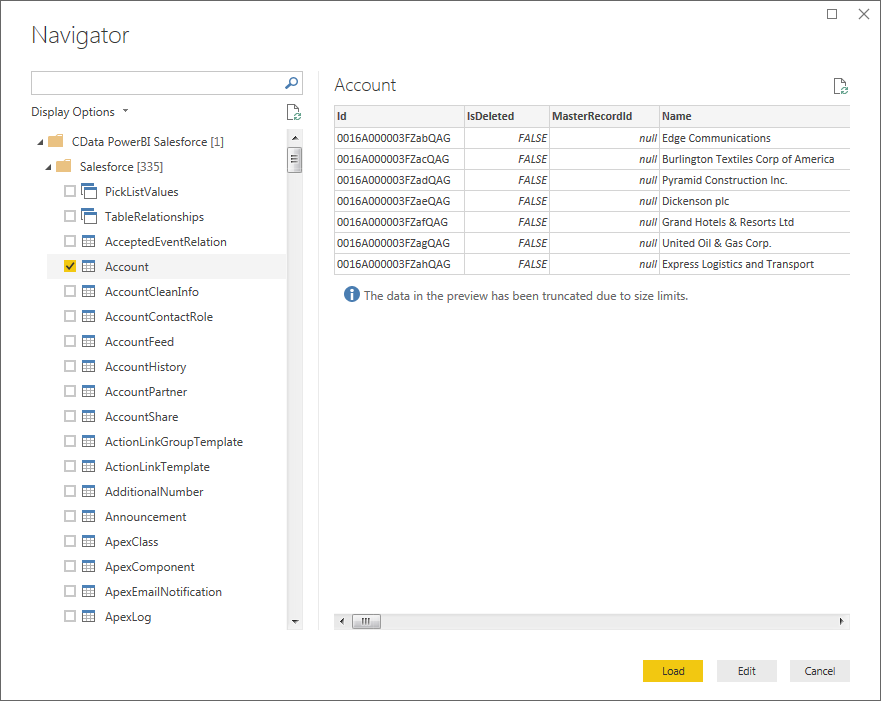Discover how a bimodal integration strategy can address the major data management challenges facing your organization today.
Get the Report →How to Create Power BI Visual Reports with Real-Time Paylocity Data
Use CData Power BI Connectors to visualize Paylocity data in Power BI.
CData Power BI Connectors provide self-service integration with Microsoft Power BI. The CData Power BI Connector for Paylocity links your Power BI reports to real-time Paylocity data. You can monitor Paylocity data through dashboards and ensure that your analysis reflects Paylocity data in real time by scheduling refreshes or refreshing on demand. This article details how to use the Power BI Connector to create real-time visualizations of Paylocity data in Microsoft Power BI Desktop.
If you are interested in publishing reports on Paylocity data to PowerBI.com, refer to our other Knowledge Base article.
Collaborative Query Processing
The CData Power BI Connectors offer unmatched performance for interacting with live Paylocity data in Power BI due to optimized data processing built into the connector. When you issue complex SQL queries from Power BI to Paylocity, the connector pushes supported SQL operations, like filters and aggregations, directly to Paylocity and utilizes the embedded SQL Engine to process unsupported operations (often SQL functions and JOIN operations) client-side. With built-in dynamic metadata querying, you can visualize and analyze Paylocity data using native Power BI data types.
Connect to Paylocity as a Power BI Data Source
Installing the Power BI Connector creates a DSN (data source name) called CData Power BI Paylocity. This the name of the DSN that Power BI uses to request a connection to the data source. Configure the DSN by filling in the required connection properties.
You can use the Microsoft ODBC Data Source Administrator to create and configure the DSN: From the Start menu, enter "ODBC Data Sources" and select the CData PowerBI REST DSN. Ensure that you run the version of the ODBC Administrator that corresponds to the bitness of your Power BI Desktop installation (32-bit or 64-bit). You can also use run the ConfigureODBC.exe tool located in the installation folder for the connector.
Set the following to establish a connection to Paylocity:
- RSAPublicKey: Set this to the RSA Key associated with your Paylocity, if the RSA Encryption is enabled in the Paylocity account.
This property is required for executing Insert and Update statements, and it is not required if the feature is disabled.
- UseSandbox: Set to true if you are using sandbox account.
- CustomFieldsCategory: Set this to the Customfields category. This is required when IncludeCustomFields is set to true. The default value for this property is PayrollAndHR.
- Key: The AES symmetric key(base 64 encoded) encrypted with the Paylocity Public Key. It is the key used to encrypt the content.
Paylocity will decrypt the AES key using RSA decryption.
It is an optional property if the IV value not provided, The driver will generate a key internally. - IV: The AES IV (base 64 encoded) used when encrypting the content. It is an optional property if the Key value not provided, The driver will generate an IV internally.
Connect Using OAuth Authentication
You must use OAuth to authenticate with Paylocity. OAuth requires the authenticating user to interact with Paylocity using the browser. For more information, refer to the OAuth section in the Help documentation.
The Pay Entry API
The Pay Entry API is completely separate from the rest of the Paylocity API. It uses a separate Client ID and Secret, and must be explicitly requested from Paylocity for access to be granted for an account. The Pay Entry API allows you to automatically submit payroll information for individual employees, and little else. Due to the extremely limited nature of what is offered by the Pay Entry API, we have elected not to give it a separate schema, but it may be enabled via the UsePayEntryAPI connection property.
Please be aware that when setting UsePayEntryAPI to true, you may only use the CreatePayEntryImportBatch & MergePayEntryImportBatchgtable stored procedures, the InputTimeEntry table, and the OAuth stored procedures. Attempts to use other features of the product will result in an error. You must also store your OAuthAccessToken separately, which often means setting a different OAuthSettingsLocation when using this connection property.
How to Query Paylocity Tables
Follow the steps below to build a query to pull Paylocity data into the report:
- Open Power BI Desktop and click Get Data -> Other -> CData Paylocity.
- Select CData PowerBI Paylocity in the Data Source Name menu and select a data connectivity mode:
Select Import if you want to import a copy of the data into your project. You can refresh this data on demand.
Select DirectQuery if you want to work with the remote data. - Select tables in the Navigator dialog.
![The available tables. (Salesforce is shown.)]()
In the Query Editor, you can customize your dataset by filtering, sorting, and summarizing Paylocity columns. Click Edit to open the query editor. Right-click a row to filter the rows. Right-click a column header to perform actions like the following:
- Change column data types
- Remove a column
- Group by columns
Power BI detects each column's data type from the Paylocity metadata retrieved by the connector.
Power BI records your modifications to the query in the Applied Steps section, adjusting the underlying data retrieval query that is executed to the remote Paylocity data. When you click Close and Apply, Power BI executes the data retrieval query.
Otherwise, click Load to pull the data into Power BI.
How to Create Data Visualizations in Power BI
After pulling the data into Power BI, you can create data visualizations in the Report view by dragging fields from the Fields pane onto the canvas. Follow the steps below to create a pie chart:
- Select the pie chart icon in the Visualizations pane.
- Select a dimension in the Fields pane: for example, FirstName.
- Select a measure in the Fields pane: for example, LastName.

You can change sort options by clicking the ellipsis (...) button for the chart. Options to select the sort column and change the sort order are displayed.
You can use both highlighting and filtering to focus on data. Filtering removes unfocused data from visualizations; highlighting dims unfocused data. You can highlight fields by clicking them:

You can apply filters at the page level, at the report level, or to a single visualization by dragging fields onto the Filters pane. To filter on the field's value, select one of the values that are displayed in the Filters pane.

Click Refresh to synchronize your report with any changes to the data.
At this point, you will have a Power BI report built on top of live Paylocity data. Learn more about the CData Power BI Connectors for Paylocity and download a free trial from the CData Power BI Connector for Paylocity page. Let our Support Team know if you have any questions.







